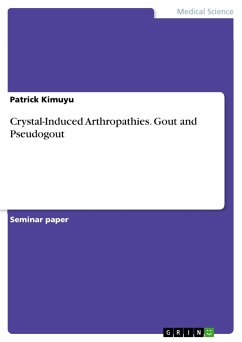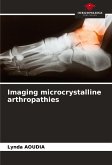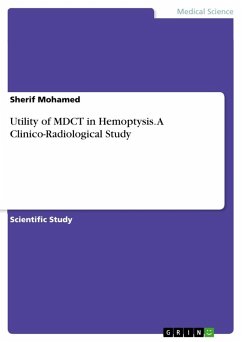Seminar paper from the year 2018 in the subject Medicine - Epidemiology, grade: 1, Egerton University, language: English, abstract: Gout and pseudogout are believed to the most prevalent crystal-induced arthropathies in humans. These disorders occur due to the deposition of crystals in the joints and soft tissues. This results into periarticular and articular inflammation and injury. Some of the most common crystals that are responsible for arthropathies such as gout and pseudogout include hydroxyapatite, monosodium urate (MSU), calcium oxalate and calcium pyrophosphate dehydrate (CPPD) (Rothschild, 2014). In practice, gout and pseudogout are relatively different despite the fact that they are crystal-induced arthropathies, and their difference can be explained by their definitions. Gout is defined as a crystal deposition disease that is characterized by the precipitation and super-saturation of monosodium urate (MSU) in tissues. This deposition of monosodium urate crystals causes inflammation of the joints and soft tissues, and this is attributable to tissue damage. Therefore, gout is characterized by sub-acute or acute attacks of joints or the inflammation of soft tissues resulting from the deposition of monosodium urate. The clinical course of gout involves an underlying metabolic aberrancy referred to as hyperuricemia which is defined as the serum urate level of more than 6.8 mg/dL (Al-Ashkar, 2010). On the other hand, pseudogout is defined as a clinical syndrome that resembles gout, and it is caused by the deposition of calcium pyrophosphate dehydrate crystals in soft tissues and joints, resulting into the inflammation and cartilage tissue damage. Therefore, the term pseudogout emanates from the nature of its clinical presentation in which acute attacks of the joints resembles those observed in gout (Al-Ashkar, 2010). However, it is worth noting that, in pseudogout, chondrocalcinosis is the most distinctive feature for the syndrome although some patients with chondrocalcinosis do not present with pseudogout. This seminar paper focuses on gout and pseudogout.
Hinweis: Dieser Artikel kann nur an eine deutsche Lieferadresse ausgeliefert werden.
Hinweis: Dieser Artikel kann nur an eine deutsche Lieferadresse ausgeliefert werden.








